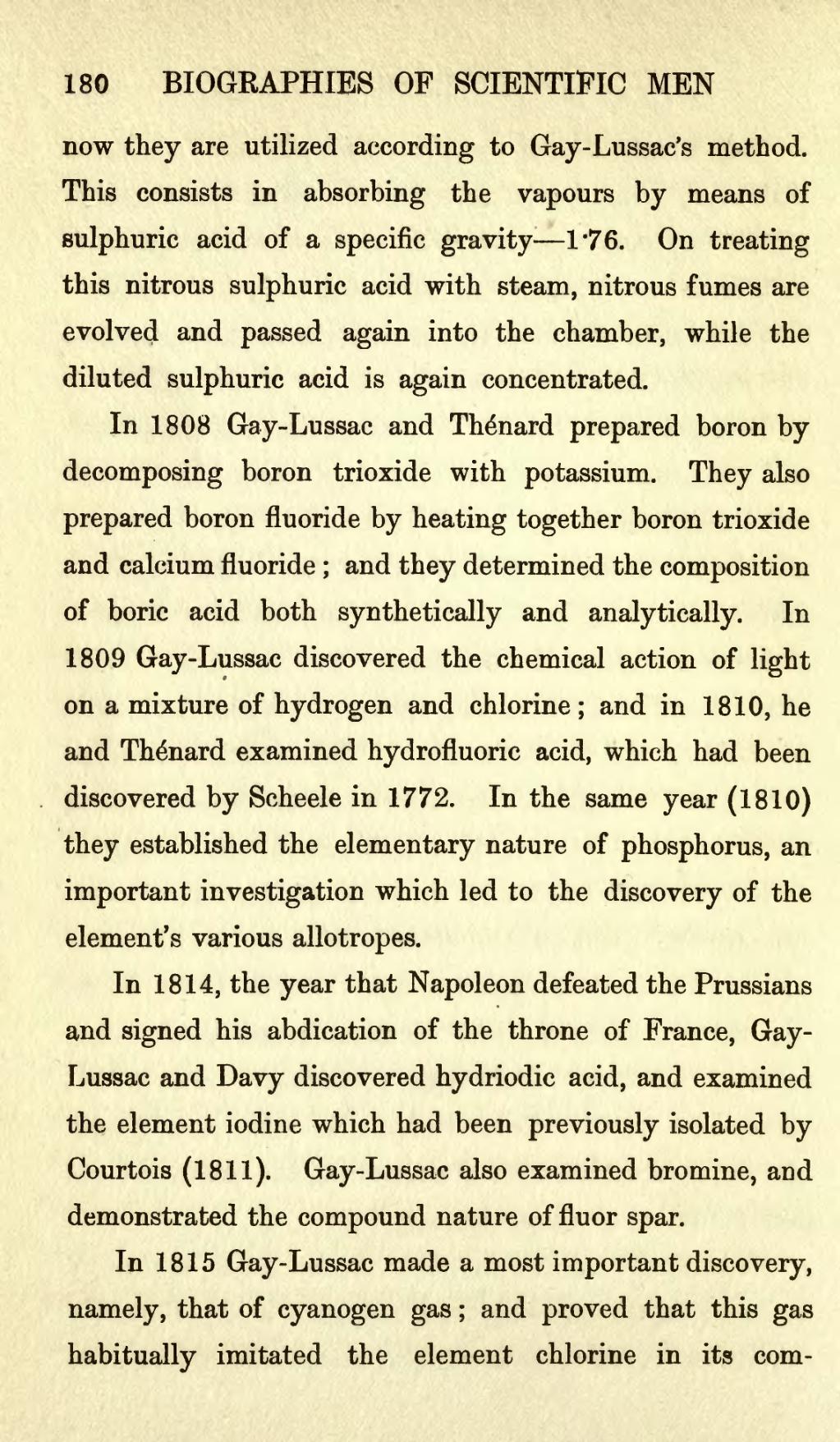now they are utilized according to Gay-Lussac's method. This consists in absorbing the vapours by means of sulphuric acid of a specific gravity—1·76. On treating this nitrous sulphuric acid with steam, nitrous fumes are evolved and passed again into the chamber, while the diluted sulphuric acid is again concentrated.
In 1808 Gay-Lussac and Thénard prepared boron by decomposing boron trioxide with potassium. They also prepared boron fluoride by heating together boron trioxide and calcium fluoride; and they determined the composition of boric acid both synthetically and analytically. In 1809 Gay-Lussac discovered the chemical action of light on a mixture of hydrogen and chlorine; and in 1810, he and Thénard examined hydrofluoric acid, which had been discovered by Scheele in 1772. In the same year (1810) they established the elementary nature of phosphorus, an important investigation which led to the discovery of the element's various allotropes.
In 1814, the year that Napoleon defeated the Prussians and signed his abdication of the throne of France, Gay-Lussac and Davy discovered hydriodic acid, and examined the element iodine which had been previously isolated by Courtois (1811). Gay-Lussac also examined bromine, and demonstrated the compound nature of fluor spar.
In 1815 Gay-Lussac made a most important discovery, namely, that of cyanogen gas; and proved that this gas habitually imitated the element chlorine in its com-
